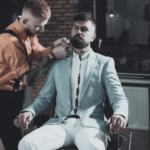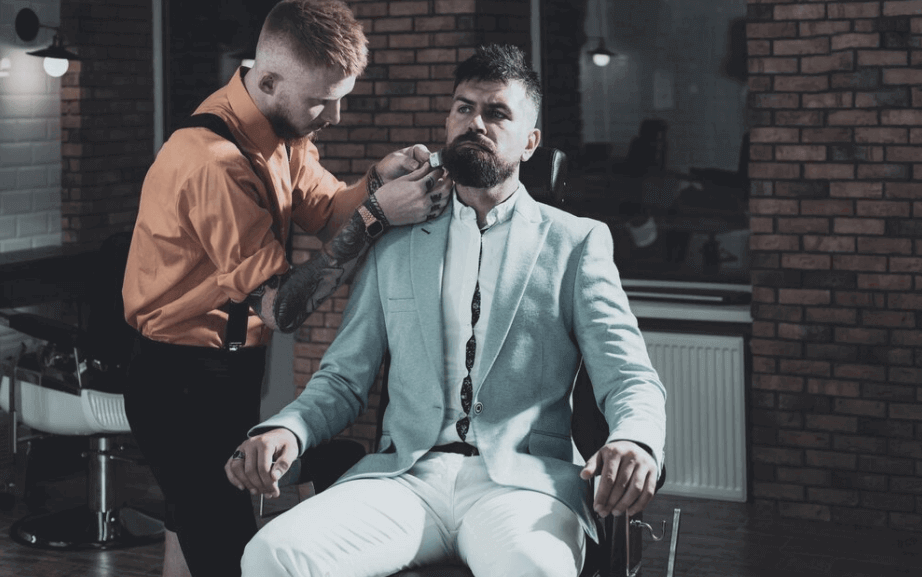In the world of men’s fashion, grooming, and lifestyle, a fascinating interplay exists between aesthetics and perception. “The science of appearance men s fashion grooming and lifestyle” encapsulates a multifaceted realm where every choice – from a suit’s cut to a haircut’s style – carries significance. It delves into the psychology behind why specific aesthetics are perceived as attractive and how men can leverage this knowledge.
Understanding the Impact of Style
Style is not merely about clothes; it’s a language of self-expression that communicates before words are spoken. The science behind men’s appearance explores the impact of colour, fit, and fabric on first impressions. For instance, studies show that wearing darker shades like navy or charcoal can convey authority and confidence in professional settings. The right clothing fit accentuates the physique, influencing perceptions of fitness and attention to detail.
The Role of Grooming in Personal Branding
Grooming is an integral aspect of men’s appearance science. A well-groomed beard or a carefully styled haircut can enhance facial features and convey specific traits. A study published in the Journal of Evolutionary Biology revealed that women often perceive men with well-groomed facial hair as more attractive and socially dominant. This underlines the importance of grooming in shaping perceptions and personal brand.
Psychology of Attraction
Attractiveness is not arbitrary; it’s rooted in evolutionary psychology and cultural norms. Symmetry, for instance, is universally associated with beauty. In men’s fashion, this translates to balanced proportions in clothing and accessories. Similarly, understanding cultural cues helps in navigating style choices. Embracing classic menswear elements while incorporating contemporary trends allows for a timeless yet relevant appearance.
Building Confidence Through Appearance
The science of appearance extends beyond aesthetics; it’s about confidence and self-assurance. Dressing well has been linked to improved self-esteem and overall mood. The right outfit can act as armour, boosting one’s sense of competence and readiness to tackle challenges. This phenomenon is often called “enclothed cognition,” where clothing influences cognitive processes.
Leveraging Lifestyle Choices
Men’s lifestyle encompasses more than just fashion and grooming; it’s a holistic approach to well-being. Fitness, diet, and mental health contribute significantly to appearance and aura. Regular exercise not only improves physical fitness but also enhances posture and demeanour. Likewise, a balanced diet and sufficient hydration positively reflect skin health and overall vitality.
Adapting to Individual Preferences
“The science of appearance men s fashion grooming and lifestyle” acknowledges the diversity of individual preferences. It advocates for authenticity in style choices, emphasizing the importance of personal comfort and expression. Experimentation with different looks can be empowering, leading to a refined understanding of what resonates best with one’s personality and lifestyle.
Practical Tips for Enhancing Appearance
- Tailoring: Invest in well-tailored clothing that complements your body shape.
- Grooming Routine: Establish a grooming regimen that suits your hair and skin type.
- Accessories: Use accessories strategically to add personality to your outfits.
- Fitness and Nutrition: Prioritize fitness and nutrition to radiate health and vitality.
- Self-Reflection: Regularly evaluate your style choices and make adjustments as needed.
“The science of appearance men s fashion grooming and lifestyle” serves as a roadmap for men seeking to navigate the intricacies of personal presentation. By understanding the psychology behind aesthetics and embracing individuality, men can harness the power of appearance to convey confidence, authenticity, and style. This science empowers individuals to make intentional choices that leave a lasting impression in all aspects of life.
In the dynamic world of men’s fashion, grooming, and lifestyle, every choice made in personal presentation carries significant implications. “The science of appearance men s fashion grooming and lifestyle” explores this multifaceted realm, delving into the psychology behind why specific aesthetics are perceived as attractive and how men can leverage this knowledge to their advantage.
The Power of First Impressions
First impressions are formed within seconds of meeting someone, often influenced by appearance. Research suggests that clothing profoundly impacts initial judgments. A well-tailored suit can convey professionalism and attention to detail, while casual attire can suggest approachability. Understanding these nuances empowers men to craft intentional impressions in various social and professional contexts.
Harnessing Color Psychology
Colours evoke specific emotions and perceptions. For example, blue is associated with trust and stability, making it a popular choice for business settings. On the other hand, red conveys energy and passion, suitable for creating a bold statement. By incorporating colour psychology into their wardrobe, men can amplify desired traits and influence how others perceive them.
The Art of Grooming
Grooming plays a pivotal role in personal branding. A carefully groomed appearance signals self-respect and attention to detail. From maintaining a well-trimmed beard to choosing a hairstyle that complements facial features, grooming enhances attractiveness and conveys professionalism. It’s not merely about looking good; it’s about feeling confident in one’s skin.
Understanding Cultural Signifiers
Fashion is a reflection of cultural values and trends. Classic menswear staples like the tailored suit or trench coat endure because they embody timeless elegance and sophistication. However, contemporary fashion embraces cultural diversity and individual expression. Men can personalize their style by blending traditional elements with modern twists, creating a unique and memorable identity.
The Role of Body Language
Appearance extends beyond clothing and grooming to encompass body language. Posture, gestures, and facial expressions contribute to overall charisma and presence. Confidence manifests through non-verbal cues, influencing how others perceive competence and authority. Practising good posture and maintaining eye contact are subtle yet impactful ways to enhance one’s presence.
Embracing Personal Wellness
A holistic approach to men’s lifestyle encompasses physical, mental, and emotional well-being. Regular exercise not only improves physical fitness but also boosts mood and self-confidence. Nutrition plays a vital role in skin health and overall vitality. Additionally, mindfulness practices such as meditation or yoga foster inner peace and radiate a sense of calmness.
Adapting Style to Individual Preferences
“The science of appearance men s fashion grooming and lifestyle” celebrates diversity in style. Whether opting for a minimalist wardrobe or experimenting with bold fashion statements, authenticity is critical. Understanding personal preferences and comfort zones allows men to curate a wardrobe that aligns with their lifestyle and values.
Practical Tips for Elevating Appearance
- Invest in Quality: Prioritize quality over quantity when building a wardrobe.
- Seek Professional Guidance: Consult with fashion experts or stylists for personalized advice.
- Stay Updated: Stay informed about current trends while staying true to your style.
- Embrace Versatility: Choose versatile pieces that can be styled for different occasions.
- Self-Expression: Use fashion as a form of self-expression and storytelling.
In conclusion, “The science of appearance men s fashion grooming and lifestyle” empowers men to make informed choices about their presentation. By integrating fashion, grooming, and lifestyle practices grounded in psychology and cultural awareness, men can project confidence, authenticity, and style in all aspects of life. This science underscores the transformative impact of appearance on self-perception and interpersonal relationships, paving the way for meaningful personal and professional growth.









